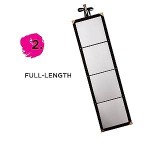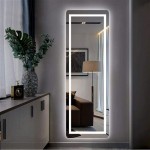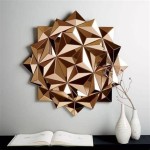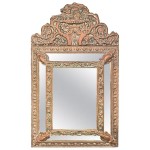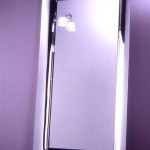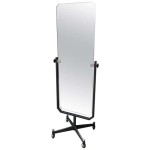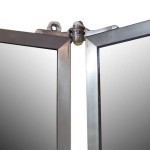Mounting Mirror Tiles on a Wall
Mirror tiles offer a versatile and cost-effective way to enhance the aesthetic appeal of any space. They can create the illusion of more space, amplify natural light, and add a touch of glamour. However, properly installing mirror tiles requires careful planning and execution. This article provides a comprehensive guide to successfully mounting mirror tiles on a wall, ensuring a beautiful and long-lasting result.
Wall Preparation
The foundation of a successful mirror tile installation lies in proper wall preparation. The wall surface must be clean, smooth, and free of any imperfections. Begin by thoroughly cleaning the wall with a mild detergent and water solution, removing any dust, grease, or debris. Allow the wall to dry completely before proceeding. Any existing wallpaper should be removed, and any holes or cracks should be filled with spackling compound and sanded smooth. For best adhesion, a primer specifically designed for glossy surfaces is recommended. Applying a primer will create a better bonding surface for the adhesive and prevent the mirror tiles from detaching over time.
Choosing the Right Adhesive
Selecting the appropriate adhesive is crucial for the longevity and stability of the mirror tile installation. While various adhesives are available, neutral-cure silicone adhesive and mirror mastic are popular choices. Neutral-cure silicone adhesive offers excellent adhesion and flexibility, accommodating minor wall movements and preventing tile cracking. Mirror mastic is another reliable option, specifically formulated for bonding mirrors to various surfaces. Avoid using acidic silicone adhesives, as they can damage the mirror backing over time. When choosing an adhesive, consider the specific wall material and environmental conditions, such as humidity and temperature fluctuations. Consulting the adhesive manufacturer's recommendations is essential for optimal results.
Planning the Layout
Before applying any adhesive, meticulously plan the layout of the mirror tiles. Measure the wall area to be covered and determine the number of tiles required. Consider the tile size and spacing, ensuring consistent gaps between tiles for a professional finish. Using spacers can help maintain uniform spacing during installation. A level and a straight edge are essential tools for ensuring straight lines and preventing crooked tile placement. Start by marking the center point of the wall and working outward, ensuring symmetrical placement. Dry-fitting the tiles before applying adhesive allows for adjustments and prevents costly mistakes.
Applying the Adhesive
Once the layout is finalized, carefully apply the chosen adhesive to the back of each mirror tile. Follow the manufacturer's instructions regarding adhesive application. Generally, a series of dots or parallel lines of adhesive are sufficient to secure the tiles. Avoid applying excessive adhesive, as it can squeeze out from beneath the tiles and create a messy appearance. For larger tiles, consider using a notched trowel to distribute the adhesive evenly. Ensure the adhesive covers the entire back surface of the tile, except for a small border around the edges, to prevent seepage.
Mounting the Tiles
With the adhesive applied, carefully position each tile onto the wall, starting from the center point and working outward. Gently press the tile against the wall, ensuring firm contact with the adhesive. Use spacers to maintain consistent gaps between tiles. A level can be used to verify proper alignment. If any adhesive squeezes out from beneath the tiles, carefully remove it with a damp cloth before it dries. Avoid sliding the tiles once they are in position, as this can disrupt the adhesive bond and create uneven spacing.
Finishing Touches
After all the tiles are mounted, allow the adhesive to cure completely according to the manufacturer's instructions. This typically takes 24 to 48 hours. Once the adhesive is cured, remove the spacers. If desired, apply a mirror sealant around the edges of the tiles to prevent moisture penetration and enhance the overall appearance. Mirror sealant is available in various colors to match the tiles or surrounding décor. Applying sealant also helps to create a more cohesive and finished look.
Safety Precautions
When working with mirror tiles, always prioritize safety. Wear appropriate safety glasses to protect your eyes from potential shards of glass. Gloves are recommended to protect your hands from adhesive and sharp edges. Ensure adequate ventilation in the work area, especially when using adhesives with strong fumes. If cutting mirror tiles is necessary, utilize a specialized mirror cutter and follow the manufacturer's safety guidelines. Properly dispose of any broken or damaged tiles to prevent injuries.

How To Hang Mirrors On Tile 3 Ways A Bonus The Palette Muse

How To Hang A Mirror On Tile Wall Remington Avenue

How To Use Decorative Mirror Tiles In Interior Design

Mirror Walls And Tiles Mirrorworld

Mirror Walls And Tiles Mirrorworld

How To Hang Mirrors On Tile 3 Ways A Bonus The Palette Muse

Mirror Walls And Tiles Mirrorworld

How To Use Decorative Mirror Tiles In Interior Design

3x12 Beveled Antique Mirror Glass Subway Tile With Free On Qualifying Orders

How To Hang A Mirror On Tiles New Zealand Handyman

